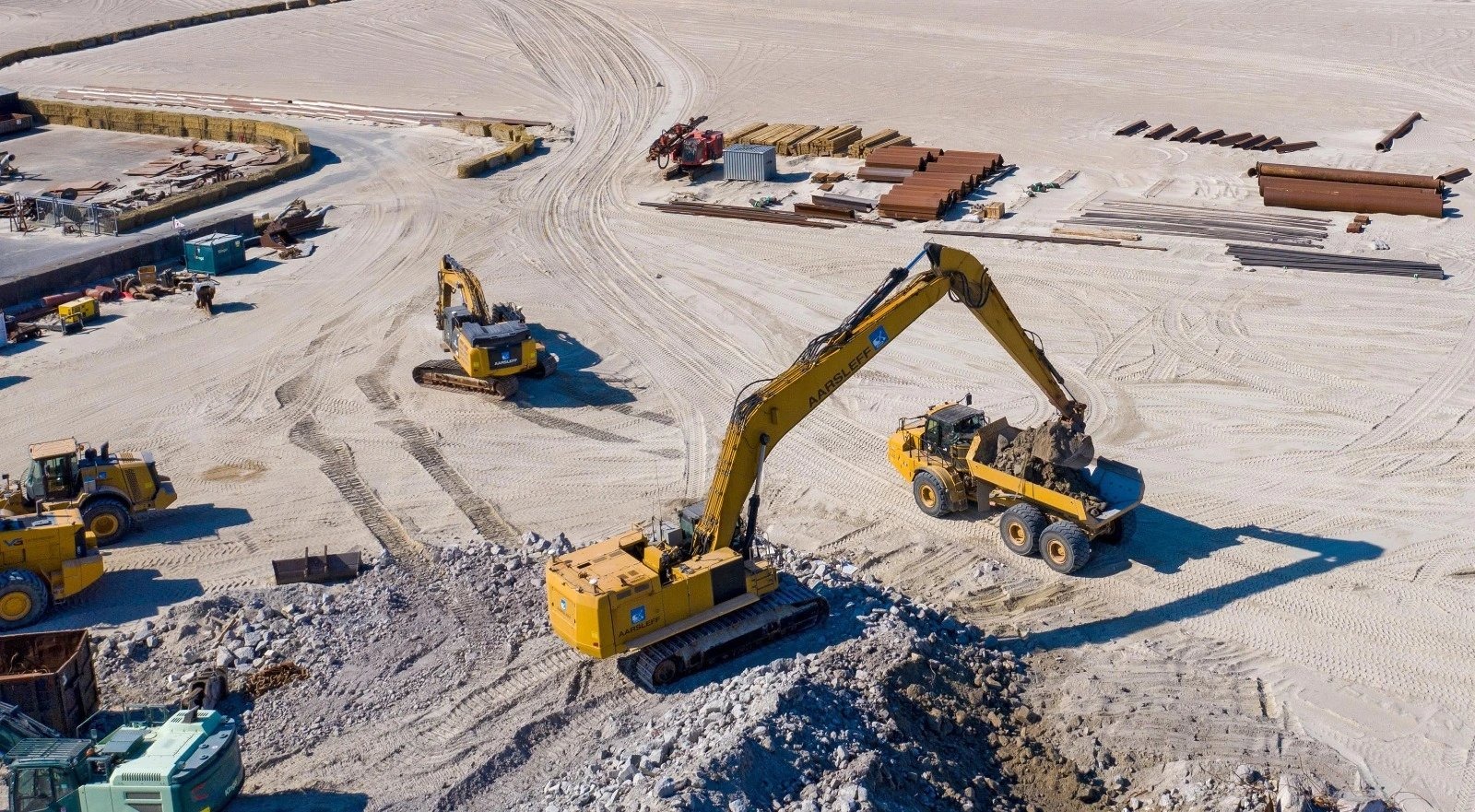

Denmark’s Construction Boom: The Need for Imported Manpower
- trienkhaiweb
- 15 February, 2024
- 0 Comments
Denmark’s construction sector is experiencing a vibrant upsurge, fueled by significant infrastructure projects and a thriving housing market. As a result, the industry faces a growing demand for skilled manpower, prompting many Danish construction companies to consider supplementing their domestic workforce with imported labor. This article delves into the latest trends and details surrounding labor importing practices within the Danish construction sector and highlights the crucial role of manpower in driving Denmark’s development.

The Shortage of Skilled Manpower in Danish Construction
Despite a relatively high domestic employment rate, Denmark’s construction industry contends with a persistent shortage of skilled labor within specific trades. This manpower scarcity is particularly pronounced in areas such as carpentry, masonry, electrical work, and plumbing. Several factors contribute to this shortage:
- Aging Workforce: A significant proportion of Denmark’s construction workforce is approaching retirement age, leading to a dwindling pool of experienced workers.
- Skills Mismatch: The Danish education system doesn’t fully align with the specific skill set that modern construction projects often demand.
- Competition from Other Industries: Construction can face competition from other sectors attracting workers with transferable skills.

The Benefits of Importing Construction Manpower
Importing labor from abroad offers a viable solution to Denmark’s manpower shortage. Some key benefits of this strategy include:
- Access to a Wider Talent Pool: Expanding the talent search beyond Denmark’s borders opens up avenues to reach a larger pool of skilled workers from diverse backgrounds.
- Filling Critical Skills Gaps: Targeting specific countries known for expertise in certain construction trades can help Danish companies address critical skill shortages.
- Boosting Competitiveness: A sufficient workforce empowers construction companies to take on larger projects, bid more aggressively, and potentially reduce overall costs.
- Supporting Economic Growth: Meeting manpower needs allows construction projects to proceed as planned, stimulating other sectors and contributing to Denmark’s overall economic well-being.
Where Does Denmark Source its Imported Manpower?
Danish construction companies turn to various countries to source skilled laborers. Primarily, the focus has been on attracting manpower from within the European Union (EU) due to the freedom of movement for workers within this economic bloc. Countries like Poland, Romania, and Bulgaria have become significant sources of imported construction labor for Denmark. Additionally, specialized skills shortages sometimes lead companies to look further afield to countries in Asia and Eastern Europe with recognized expertise in particular construction trades.

Regulations and Ethical Considerations in Manpower Importing
The Danish government has implemented regulations to ensure fair labor practices and protect workers’ rights when companies import manpower for its construction industry. These regulations include:
- Equal Pay and Working Conditions: Imported laborers are entitled to the same wages, benefits, and working conditions as Danish workers in comparable positions, preventing exploitation.
- Housing and Social Integration: Companies importing labor often play a role in securing suitable housing and supporting the social integration of foreign workers to ensure a smooth transition.
- Worker Safety: Prioritizing on-site safety is mandatory, and all workers, regardless of origin, must receive the necessary training and equipment.
The Future of Manpower in Danish Construction
Denmark’s ongoing construction boom indicates a continued need for skilled manpower to achieve its ambitious infrastructure and development goals. It’s likely that importing labor will remain an integral part of the solution. Therefore, Danish construction companies must maintain focus on developing long-term strategies for effective manpower management. This includes continued collaboration with the government, educational institutions, and labor organizations to enhance worker pipelines, provide adequate training, and ensure fair practices in labor importing.
Conclusion
The skilled manpower provided by imported laborers plays a vital role in sustaining the vitality of the Danish construction industry. To fully capitalize on its construction sector’s potential, it’s essential that Denmark balances the need for manpower with sound policies that safeguard workers’ rights and uphold ethical labor practices.
Related articles
11 Universal Truths That Fuel Successful Research in Manpower Management
In today’s rapidly evolving business landscape, staying ahead of the curve requires a commitment to ongoing research and analysis. This is especially true in the field of manpower management, where understanding trends and adapting to change is crucial for success. Whether you’re a seasoned HR professional or a business leader seeking to optimize your workforce,…
15 Effective Manpower Recruitment Strategies: A Quinn Vietnam Manpower Guide
In today’s competitive business landscape, securing top talent is crucial for success. Effective manpower recruitment is the foundation upon which organizations build high-performing teams and achieve their goals. This comprehensive guide, brought to you by Quinn Vietnam Manpower, outlines 15 proven strategies to optimize your recruitment process and attract the best talent in 2025. Develop…
17 Essential Management Skills for Success
The business landscape is constantly evolving, and 2025 promises to bring new challenges and opportunities for managers across all industries. While there’s no magic formula for becoming a great leader, cultivating a strong set of management skills is crucial for navigating the complexities of the modern workplace. This article, brought to you by Quinn Vietnam…
20 Qualities of a True Leader in the Manpower Industry
Leadership in the manpower industry requires a unique blend of skills and attributes. At Quinn Vietnam Manpower, we recognize the importance of strong leadership in driving success for our clients and partners. As we move into 2025, the demands on leaders are evolving, requiring adaptability, vision, and a deep understanding of the changing dynamics of…
Aligning Purpose and Objectives for Manpower Success
In the dynamic landscape of manpower management in 2025, understanding the difference between purpose and objectives is crucial for organizational success. Quinn Vietnam Manpower recognizes that a clear articulation of purpose and well-defined objectives are essential for driving performance, fostering employee engagement, and achieving strategic goals. This article delves into the critical distinction between purpose…
Assertive vs. Aggressive Leadership: Finding the Balance
In today’s dynamic business environment, effective leadership is crucial for success. Leaders need to be assertive to drive results, inspire their teams, and navigate challenges. However, there’s a fine line between assertiveness and aggression, and crossing it can create a toxic work environment, hinder productivity, and damage morale. This article, brought to you by Quinn…







